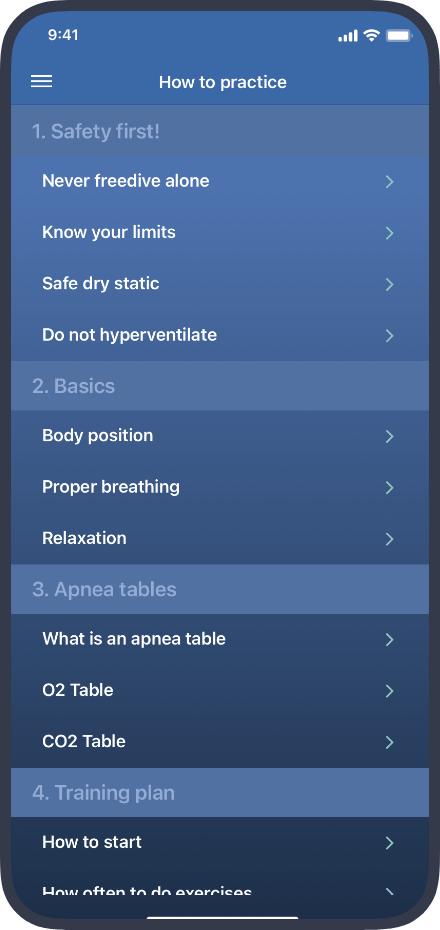Basics
Body position
It is important to stay as relaxed as possible during an apnea workout. Any muscle tension consumes oxygen and makes it more difficult to perform long breath-holds. The best body position for a dry static apnea is a “dead man’s pose” (also known as Shavasana in yoga). To perform Shavasana, lie on your back with your legs spread as wide as the yoga mat, and with your arms relaxed to the side, and your eyes closed. The whole body is now relaxed on the floor with an awareness of the chest and abdomen rising and falling with each breath. If, for some reason, you cannot lie on your back and still want to do a training routine (e.g. you’re in an office or on a bus) - sit back in a chair, or find a comfortable position where you don’t need to support yourself.
Proper breathing
During breath-up intervals do not breathe too quickly (no hyperventilation), inhale with your stomach first then with your chest (deep, diaphragmatic breathing), and exhale slowly (double the time of the inhale). Roughly 5-10 seconds before a breath-hold, inhale deeply through your mouth and then hold your breath. Do not exhale during the entire apnea interval.
Relaxation
The more relaxed you are, the better results you will get. Deep relaxation will be the key element to fast progress during the first month of apnea training. It is good practice to scan your body during apnea intervals by looking for muscle tension, and trying to eliminate it. Make sure you start any exercise or personal best attempt with 2-3 minutes of relaxation.
Read next: Apnea tables


